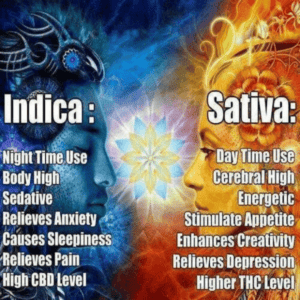Starting Medical Marijuana – What to Know

2023- Marijuana Basics to Know
Starting Marijuana or Returning to the Plant?

Methods of Medical Marijuana Consumption
Starting Medical Marijuana – What to Know – Choosing The Method To Consume That’s Best For You:
After trying different types of medical cannabis and figuring out which is best for your personal condition(s), the next step is to select the delivery method that works best for you.
There are a number of ways to use medical cannabis to relieve your symptoms, here are the primary methods of consumption:
Vaporizing: This method is known to be the most convenient and beginner-friendly method of consuming medical cannabis. Most commonly used in disposable cartridges that are inserted into vapor pen batteries that are designed for portability. Also, inhaling vapor is less harsh on the lungs and throat than inhaling smoke.
Ingesting/Edible: This is a common option for patients who do not wish to inhale cannabis smoke or vapor. It is strongly recommended that medical cannabis be ingested in small doses, due to the fact that the psychoactive effects can be stronger when ingested compared to when smoked/vaped.
Tincture/Drops: Tincture is medical cannabis in liquid form. It is most commonly used by placing drops under the tongue and letting the liquid absorb through the sublingual gland.
Topical: Topicals are medical cannabis-infused creams, lotions, and balms that are able to be applied directly to the skin. The topical is then absorbed by the skin and is able to provide inflammation and pain relief to the applied area. Topicals are most commonly used for specific conditions and symptoms, such as arthritis. It is important to note that topicals do not result in a psychoactive effect or a “high” feeling, so it is perfect for those just looking for relief without any effects on psychoactivity.
Smoking: This is probably the most well-known method of consuming cannabis. The smoking method provides a feeling of euphoria and symptom relief almost instantly after consumption, however, the effects may only last for 40min to 1hr. Smoking can also cause throat burning sensations as well as lung complications, so it is usually not the consumption method that is first recommended.
Most new medical marijuana patients go into the process believing they understand the delivery method that will work best for them, but we caution you against this pre-determined mentality. We say this because you honestly may be surprised to find that a delivery method you never considered may actually deliver the best benefits for you. For example, you may think you need to smoke medical marijuana, but in practice find that the smell inhibits the times and places you can safely consume your marijuana medication. Trying different delivery methods will help you to better plan and achieve your positive results. In addition, overlapping different delivery methods can help you to achieve different effects. For example, you may take a tincture medical marijuana product an hour before bed. If you are still not quite sleepy enough before you lay down for the night, a few quick pulls from a medical marijuana vape can be the fast-acting effect you need to drift off to sleep while the tincture continues to work in your body to help you stay asleep longer.

Indica, Sativa, and Hybrids
Starting Medical Marijuana – What to Know – 3 Main Classifications of Medical Cannabis Strains:
Indica: Provides benefits of relaxation and reduced inflammation and is commonly used to treat chronic pain, insomnia, anxiety, and a number of other similar conditions
- Origin: Cannabis indica is native to Afghanistan, India, Pakistan, and Turkey. The plants have adapted to the often harsh, dry, and turbulent climate of the Hindu Kush mountains.
- Plant description: Indica plants are short and stocky with bushy greenery and chunky leaves that grow wide and broad. They grow faster than Sativa, and each plant produces more buds.
- Typical CBD to THC ratio: Indica strains often have higher levels of CBD and less THC.
- Commonly associated effects of use: Indica is sought after for its intensely relaxing effects. It may also reduce nausea and pain and increase appetite.
- Daytime or nighttime use: Because of its deep relaxation effects, Indica is better consumed at night.
- Popular strains: Three popular Indica strains are Hindu Kush, Afghan Kush, and Granddaddy Purple.
Sativa: Provides stimulating and energizing effects and is commonly used for physical activities, creative/thoughtful activities, and is also used to treat inflammation and depression, along with a number of other diseases.
- Origin: Cannabis sativa is found primarily in hot, dry climates with long sunny days. These include Africa, Central America, Southeast Asia, and western portions of Asia.
- Plant description: Sativa plants are tall and thin with finger-like leaves. They can grow taller than 12 feet, and they take longer to mature than some other types of cannabis.
- Typical CBD to THC ratio: Sativa often has lower doses of CBD and higher doses of THC.
- Commonly associated effects of use: Sativa often produces a “mind high,” or an energizing, anxiety-reducing effect. If you use Sativa-dominant strains, you may feel productive and creative, not relaxed, and lethargic.
- Daytime or nighttime use: Because of its stimulating impact, you can use Sativa in the daytime.
- Popular strains: Three popular Sativa strains are Acapulco Gold, Panama Red, and Durban Poison.
Hybrids: A hybrid strain is created by cultivating cannabis through a combination of Sativa and Indica cannabis plants. This creates a “combination” of both the relaxing feeling from Indicas and the stimulating effects of Sativas. The ratio of Indica to Sativa can vary between different strains of hybrids.
- Origin: Hybrids are typically grown on farms or greenhouses from a combination of Sativa and Indica strains.
- Plant description: The appearance of hybrid strains depends on the combination of the parent plants.
- Typical CBD to THC ratio: Many hybrid cannabis plants are grown in order to increase the THC percentage, but each type has a unique ratio of the two cannabinoids.
- Commonly associated effects of use: Farmers and producers select hybrids for their unique impacts. They can range from reducing anxiety and stress to easing symptoms of chemotherapy or radiation.
- Daytime or nighttime use: This depends on the predominant effects of the hybrid.
- Popular strains: Hybrids are typically classified as Indica-dominant (or Indica-dom), Sativa-dominant (Sativa-dom), or balanced. Popular hybrids include Pineapple Express, Trainwreck, and Blue Dream.
Medical Marijuana Safety
Starting Medical Marijuana – What to Know – All About Medical Marijuana Safety:
Before purchasing and using medical cannabis for symptom relief, it is important to know the do’s and don’ts of medical cannabis use, as well as the rules and responsibilities that come along with being a medical cannabis patient.
- Be Aware of the Effects: The effects of THC can vary for first-time users depending on the person and their condition. Some individuals may feel the effects immediately, while others might have a “natural tolerance”. In addition, it’s possible to get feelings of anxiety and paranoia if too much cannabis is consumed.
- Follow the Dosages: It is important to follow the prescribed/recommended dosages just as they were given to you by your doctor. As time goes on and your tolerance develops and increases, dosages can be adjusted. It is important to follow exact dosages when first starting to medicate with cannabis in order to see how your body will react to the medicine.
- Do NOT Share With Others: Along with being unsafe, it is against the law to share or give your medical cannabis products to anyone else. The rules and regulations are the same as with any other prescribed drugs.
Potential side effects and risks:
- dry mouth
- dry eyes
- dizziness
- anxiety
- paranoia
- lethargy
- increased heart rate
- decreased blood pressure
Most of these effects are associated with THC, not CBD or other cannabinoids. However, any cannabis product can produce side effects. The method of use may increase your risk for side effects, too. For example, smoking or vaping cannabis can irritate your lungs and airways. This may lead to coughing and respiratory problems. Oral cannabis preparations, such as gummies or cookies, are less likely to affect your overall respiratory health. However, the effects are felt more slowly and typically aren’t as strong.
